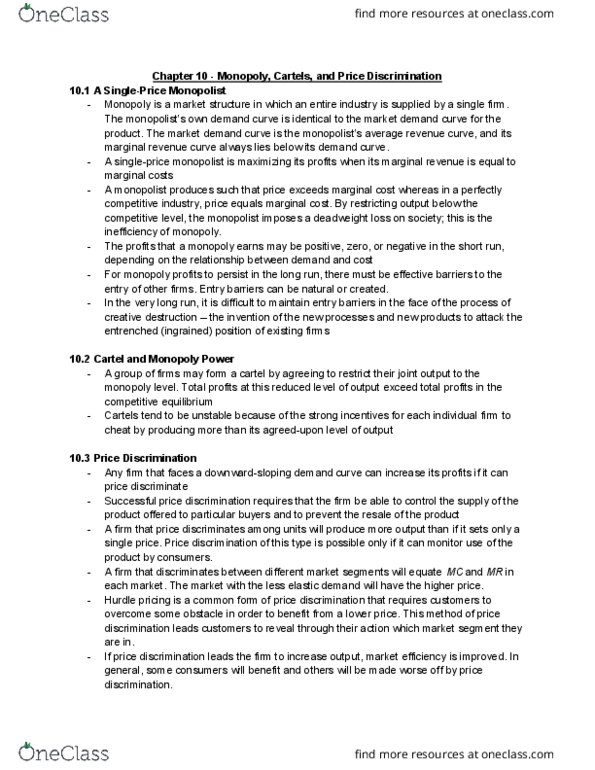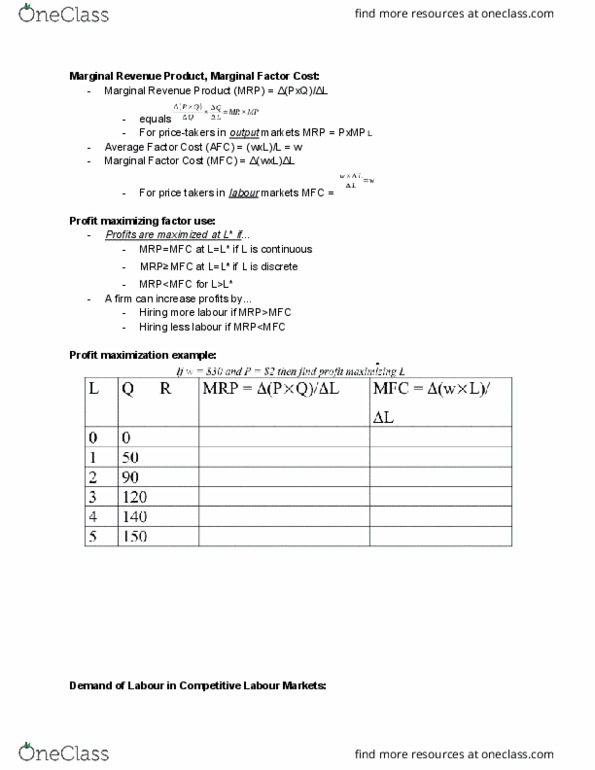EC120 Lecture Notes - Lecture 16: Monopolistic Competition, Price Discrimination, Marginal Revenue
EC120 verified notes
16/24View all
Document Summary
Chapter 10 - monopoly, cartels, and price discrimination. Monopoly is a market structure in which an entire industry is supplied by a single firm. The monopolist"s own demand curve is identical to the market demand curve for the product. The market demand curve is the monopolist"s average revenue curve, and its marginal revenue curve always lies below its demand curve. A single-price monopolist is maximizing its profits when its marginal revenue is equal to marginal costs. A monopolist produces such that price exceeds marginal cost whereas in a perfectly competitive industry, price equals marginal cost. By restricting output below the competitive level, the monopolist imposes a deadweight loss on society; this is the inefficiency of monopoly. The profits that a monopoly earns may be positive, zero, or negative in the short run, depending on the relationship between demand and cost. For monopoly profits to persist in the long run, there must be effective barriers to the entry of other firms.







